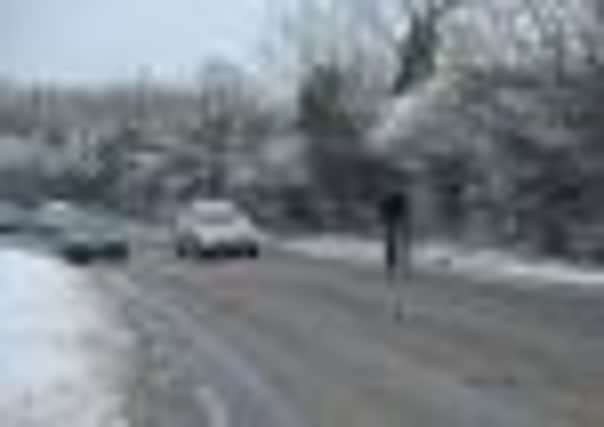Drive safely this winter


Les Stonnell, from LADC School of Motoring in Luton, said driving in the ice and snow can be very dangerous.
He advises to only drive if your journey is really necessary, allow sufficient time and avoid dusk or night driving.
Advertisement
Hide AdAdvertisement
Hide AdPreparation is key, and a full tank of fuel is essential. Your biggest source of heat if stranded will be your car engine.
Make sure all lights are working, fluid levels correct, use a stronger screen wash to prevent it freezing, make sure all windows are clean and use a de-icer and suitable scraper.
Mr Stonnell said: “When you’re defrosting your car, don’t leave it with the engine running - a lot of people have lost their cars doing this and the insurance companies won’t pay for it. Don’t put hot water on the windscreen as it will go brittle and shatter. Get a couple of hot water bottles and stick them on the dashboard for half an hour before you go instead.”
If the worst case scenario should happen and you break down, never leave your car unattended with its engine running, this will also nullify its insurance cover if stolen. Leave it in the safest place possible.
Advertisement
Hide AdAdvertisement
Hide AdDress for the conditions and take a thermos of hot drink or soup and high energy food such as sweets, chocolate and glucose based snacks.
Keep a blanket or sleeping bag and a high visibility coat or vest in the car, and have entertainment especially if you are driving with young children.
Other handy items to travel with are sunglasses to reduce low winter sun glare, a mobile phone charger and your breakdown service telephone number.
Inform someone you are travelling particularly if driving in a remote area.
Advertisement
Hide AdAdvertisement
Hide AdWhile driving, apply gentle acceleration, steering and braking and pull away in 2nd or 3rd gear.
Watch your speed and remember that cyclists and pedestrians will be less visible than other vehicles.
Stopping distances increase up to ten times in ice and snow.
Mr Stonnell said: “Never rev your engine. That only polishes snow and ice. If your vehicle starts to skid gently lift-off the throttle and steer into the skid. Try not to brake but use first gear as a brake. Black ice is often in areas shadowed from sun particularly on roads heading north to south.
Advertisement
Hide AdAdvertisement
Hide Ad“Beware of driving on non-gritted roads and in wheel-tracks because compressed snow is more likely to cause a skid than undisturbed snow.”
While your car is warm inside it can be freezing outside so monitor your external temperate gauge.
Dipped headlights are essential to see and be seen but do not use fog lights unless visibility is less than 100 metres - they dazzle oncoming vehicles and rear fog lights can obscure brake lights.
Avoid flashing headlights to acknowledge other drivers as it causes dazzle.